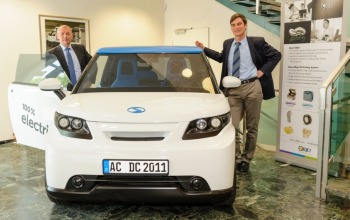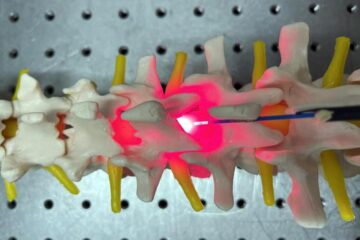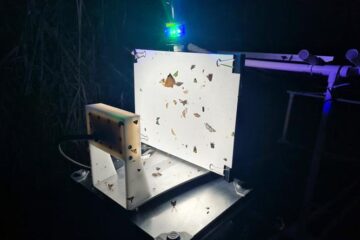Apps for Electric Cars

Basically, the idea is to control a variety of vehicle functions on a uniform, centralized computer platform instead of providing every system with its own hardware and software as today. The aim is to simplify the complicated interplay of the many assistance, safety, and infotainment systems.
In addition, separating the software from the technology on which it runs facilitates retrofitting new features. In the same way that apps use smartphones' existing technology, such as GPS or cameras for their own purposes, integrated standard components such as proximity sensors, control units, and display elements could be used for new functions in automobiles. The all-new ICT concept was developed by Siemens' global Corporate Technology (CT) department and its partners in the government-funded RACE project.
The new ICT architecture will simplify the introduction of new functions in electric cars. It will also make it more cost-effective and enable the features to be installed in small batches of vehicles. To test these possibilities in real-life, researchers at CT will introduce the new technology into a StreetScooter electric delivery vehicle by December 2014.
In addition to communications networks and software, the vehicle will receive a standardized computer platform developed by CT. Siemens will also provide the company StreetScooter with a software development environment that will allow it to incorporate new functions into the system and integrate them into the car. StreetScooter GmbH develops and produces electric vehicles for short runs. It is currently focusing on creating customized solutions for transport vehicles used for parcel delivery services or local public transportation, for example.
The RACE project has developed an electronics and software architecture for electric vehicles that represents a paradigm shift for automobile manufacturing. Previously, automotive systems such as anti-lock braking systems, parking aids or air-conditioning controls had all been independent, stand-alone units. A mid-range car contains more than 70 of these control units from a variety of suppliers.
Ensuring they all interact smoothly with one another is therefore a complicated process. For the RACE project, the researchers at Siemens CT not only developed the central computer platform and the communications technology, but also the software that brings all of the different systems together and ensures their failsafe operation. This also simplifies the integration of safety-related systems, such as those needed for autonomous driving.
The government-funded project RACE (Robust and Reliant Automotive Computing Environment for Future eCars) will run until the end of 2014. Siemens is the consortium leader. Partners include TRW Automotive, AVL Software and Functions, fortiss, the University of Stuttgart, TU München, RWTH Aachen University, and the Fraunhofer Institute for Applied and Integrated Security (AISEC).
Media Contact
All latest news from the category: Information Technology
Here you can find a summary of innovations in the fields of information and data processing and up-to-date developments on IT equipment and hardware.
This area covers topics such as IT services, IT architectures, IT management and telecommunications.
Newest articles

Red light therapy for repairing spinal cord injury passes milestone
Patients with spinal cord injury (SCI) could benefit from a future treatment to repair nerve connections using red and near-infrared light. The method, invented by scientists at the University of…

Insect research is revolutionized by technology
New technologies can revolutionise insect research and environmental monitoring. By using DNA, images, sounds and flight patterns analysed by AI, it’s possible to gain new insights into the world of…

X-ray satellite XMM-newton sees ‘space clover’ in a new light
Astronomers have discovered enormous circular radio features of unknown origin around some galaxies. Now, new observations of one dubbed the Cloverleaf suggest it was created by clashing groups of galaxies….





















